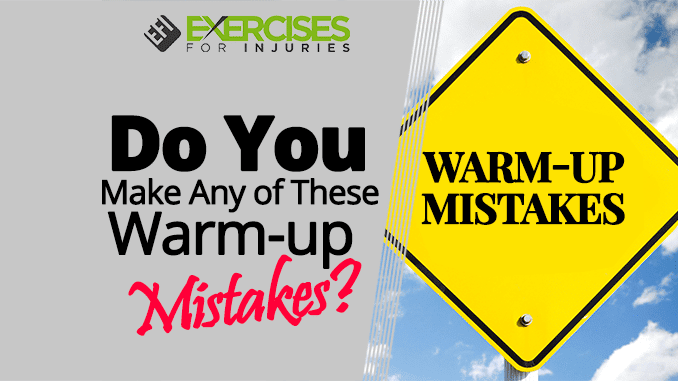
The kids are getting into this Halloween thing. Even the dog is ready to go. It should be a crazy night. We have been told that we can expect about 600 kids. 600! Wow! It should be fun. Now getting to what I have for you today. Let’s talk about warm-up mistakes.
If you do a warm-up, let me ask.
Do You Make Any of These Warm-up Mistakes?
1. Not Working the Range
Range of motion refers to the distance a joint can move in all directions. The range of motion for a typical human being is about 120 degrees from side to side and about 180 degrees from front to back.
An example is when you are standing up straight with your arms down by your side. This is lateral rotation at the shoulder: if you lift your arm, that’s called flexion, and if you rotate it so your palm faces the ceiling, that’s called abduction.
We should not exercise outside our range as it puts unnatural stress on the joints and muscles, which can lead to injury or pain.
Now, if a joint has a limited range of motion, you must work within that range. If you don’t use the entire range of motion, the joint won’t be fully lubricated, tissues around the joint will stiffen, and you’ll lose more and more range of motion, leading to various pain and injury issues. The ankles, knees, hips, and shoulders all benefit from this.
When warming up, use your joints’ entire range of motion while staying within acceptable boundaries. If you can’t accomplish it loaded (with extra weight on the joint), try it unloaded (with only your body weight). This is the most crucial and initial tip.
2. Focusing on Where You Are Good
You can do many types of warm-ups, such as jumping jacks, squats, leg bends, and arm-shoulder circles. However, just doing one or two of these warm-up exercises without touching other muscles or joints may not be enough to get all the benefits of warming up.
This is something I notice a lot in women. They have a lot of movement and flexibility in their hips, focusing solely on them throughout their warm-up. Warming up the places you’ll be working on next, focusing on parts where you’ve had a previous injury, and working on areas where you need to develop, such as your mid-back and shoulders, is more significant.
3. Not Adding Any Resistance
You may begin with very little to no resistance. But as your warm-up progresses, you will need to add resistance, such as body weight, a kettlebell, a dumbbell, or resistance bands.
These stabilizing muscles aid in joint protection. This assists in the activation of the primary muscles involved in the movement, as well as the supporting muscles. If you sit a lot or have had a past injury, your stabilizing muscles aren’t working as well as they should be. So, it would help if you warmed them up before the main exercise routine to prevent discomfort or injury.
4. Ignoring Old Injuries
You want to get to the point where you aren’t constantly concerned about an injury preventing you from doing what you want. Re-injury is more likely if the area is stiff or your stabilizing muscles are not activated. What you do to warm up before your workout or activity is one thing that will help you from re-injuring that area.
Ignoring a muscle injury, no matter what caused it, can result in limited motion, affecting your performance and daily functioning and resulting in permanent damage.
If you want to know the warm-up I do before my workout, you can check it out here.


